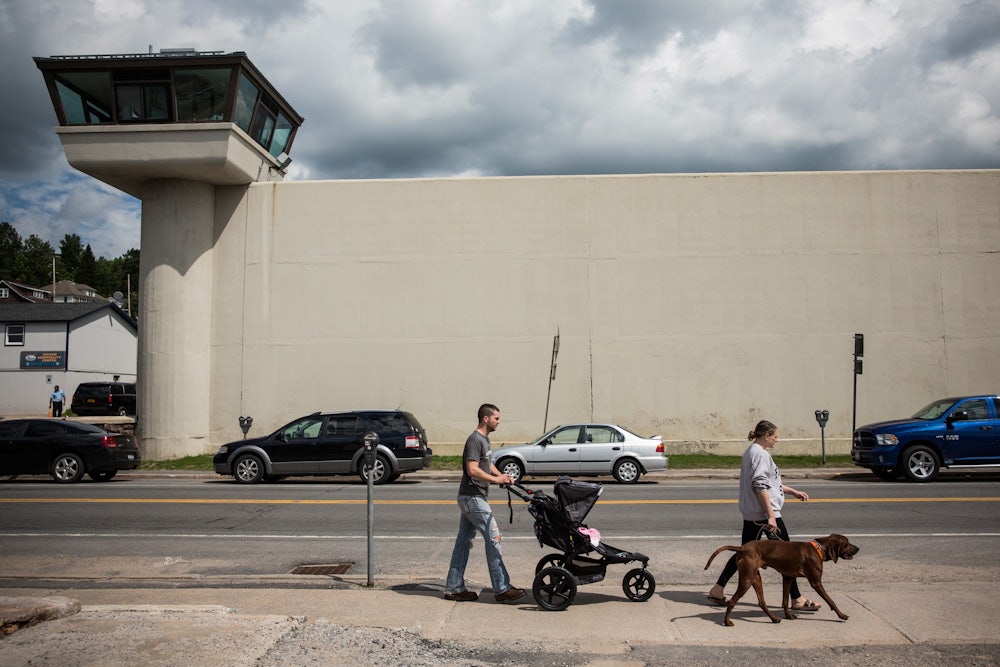The Trump administration suffered its worst legal defeat yet last month when the Supreme Court effectively forced it to keep a citizenship question off the 2020 census. Had the effort succeeded, fewer immigrants and noncitizens would have participated in the census, thereby warping a decade’s worth of federal statistics and congressional districts. More than 200,000 households reportedly are being asked the citizenship question as part of a census test that began in June, prior to the Supreme Court’s intervention, but the question’s absence from the official survey next year is good news for American governance.
Still, there are other issues surrounding the census and democratic representation, and foremost among them is one that Democrats don’t have to appeal to the courts, or win the presidency, to fix: prison gerrymandering.
States use census data to redraw local and federal legislative districts every ten years. This process is tainted by the fact that the census counts prisoners as residents of wherever they’re imprisoned, rather than their original address. Because prisoners can’t vote in 48 of the 50 states, voters who live near prisons have more political clout per capita. And because prisons are typically built in sparsely populated regions, the count inflates rural voters’ power while diluting urban voters’ power, undermining the constitutional principle of “one person, one vote.”
Only a handful of states have taken steps to address this issue. And while many of the 2020 Democratic candidates have pitched aggressive plans to restructure American political power, few have outlined how they’d tackle prison gerrymandering. There’s still time before next year’s census to change that.
Every state apportions its legislative seats on the basis of total population, and prisoners aren’t the only group that can skew that figure. States generally count college students and military personnel as part of the local population during the census. The Supreme Court does allow states to deviate from total population to a certain degree, as it did in 1966 when it ruled that Hawaii could make adjustments to account for tourists and nonresident soldiers during the Vietnam War. But most generally rely on the Census Bureau numbers.
Prisoners warp that calculus in unusual ways. The lawmakers who stand to gain from their presence when it comes to political representation also write the laws and fund the prison construction budgets that place them there. That makes prison gerrymandering a uniquely distortive force compared to soldiers and students. And as The Appeal’s Daniel Nichanian noted earlier this month, “The skew is compounded by the fact that incarcerated people are barred from voting in all but two states, silenced even as their presence bolsters the representation of the areas they are displaced to.”
If the United States had an incarceration rate closer to other stable industrialized nations, prison populations would likely be a minor detail in the reapportionment process. With nearly 1.5 million people behind bars nationwide, the aggregate effect can be significant. The Arizona Capitol Times reported that the state’s 8th legislative district houses roughly 13,600 prisoners in its borders, amounting to roughly 6 percent of its overall population. Racial disparities in the criminal-justice system also compound the distortions on American political geography. In effect, younger prisoners of color are used to boost the political weight of whiter, more conservative rural areas.
State map-drawers know well how prisons can be used to strengthen or dilute electoral power. Take Ohio’s 4th congressional district, which is currently represented by Republican Jim Jordan. It stretches in a jagged line from northwestern Columbus to Cleveland’s western suburbs. A 2017 Plain Dealer analysis noted that the district includes a small “hook-shaped area” on its easternmost boundary to include two state prisons that currently house roughly 3,000 prisoners. In practical terms, the 4th district claims those prisoners’ right to political representation without letting them decide who gets to represent them. No wonder a federal court ruled earlier this year that Ohio Republicans had drawn the state’s map, including the fourth district, to unconstitutionally entrench themselves into office.
Six states currently ban prison gerrymandering, according to the Prison Policy Initiative, a nonprofit organization that studies criminal-justice issues. Nevada and Washington passed laws to prevent the practice this year, joining California, Delaware, Maryland, and New York. (Washington Governor Jay Inslee, who signed his state’s bill, is one of the two dozen Democrats running for president.) The NAACP sued Connecticut last year over how it tabulated prisoners when redrawing state legislative districts. A federal judge allowed the lawsuit to proceed in February. Though a dozen other states have mulled legislation to end the practice, few have advanced it.
That hesitation is striking. Democratic presidential candidates are unusually eager to discuss political reforms this cycle. Granting statehood to D.C. and Puerto Rico, abolishing the Electoral College, and packing the Supreme Court are all ideas floated by the 2020 contenders. Some have even backed letting prisoners vote, which would partially remedy the issue. But prison gerrymandering is still getting short shrift. One of the only candidates to have addressed the issue so far is Pete Buttigieg, who took aim at it in his Douglass Plan, which includes a slate of political and economic reforms for black communities.
The ideal vehicle for reform would be through federal law. Wisconsin Representative Mark Pocan added an amendment to H.R. 1, the Democrats’ democracy-reform bill, that would remedy the problem before its passage earlier this year. But that bill stands no chance of passing the Republican-controlled Senate or getting the president’s signature, placing the onus for change on the states themselves. The census count doesn’t begin until next April, and new maps won’t be drawn until 2021. That gives reformers plenty of time to end prison gerrymandering before then—but only if they can muster the will to do it.
